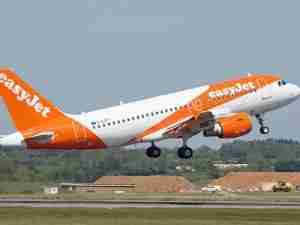SWISS posts stable first-half result
posted by AJOT | Jul 31 2014 at 02:26 PM | Air Cargo
SWISS reports an operating profit of CHF 118 million for the first six months of 2014, up 64 per cent on the same period last year. This result is primarily due to a new method of calculating depreciation. Total income from operating activities amounted to CHF 2,517 million, practically unchanged against the prior-year period.
In the first six months of 2014 Swiss International Air Lines (SWISS) generated a total income from operating activities of CHF 2,517 million, an amount that changed slightly from the year prior (1st half of 2013: CHF 2,515 million.). However, SWISS was able to increase its operating profit by 64 per cent, to CHF 118 million (1st half 2013: CHF 72 million) but this figure must be considered in light of a change in the method of calculating depreciation adopted by the Lufthansa Group at the beginning of the year. If the effect of this change is excluded, the result remains on prior-year level.
A difficult market environment persisted in the second quarter of 2014. The operating profit of CHF 115 million was better than the corresponding outcome for the second quarter of 2013 (Q2 2013: CHF 96 million). At CHF 1,326 million, second-quarter operating income was little changed vis-à-vis the prior-year period (Q2 2013: CHF 1,325 million).
The company is feeling increasing competitive pressure, particularly in Europe but also on North Atlantic routes. Yield erosion had a sharp impact on profitability during the period under review. The weakness of foreign currencies against the Swiss franc and relentlessly high fuel prices pose additional strains.
"In comparison with competitors SWISS is performing relatively well, but we see no sign of market conditions becoming more favourable. Hence, we must continue to work hard for our success," commented SWISS CEO Harry Hohmeister.
SWISS remains on course with the result improvement programme SCORE. At present, SCORE projects with the potential to improve results by CHF 86 million for 2014 are envisioned, which puts SWISS significantly above the SCORE results for 2012 (CHF 49 million) and slightly below the level for 2013 (CHF 98 million). Currently at SWISS, 269 SCORE measures are either in progress or have already been completed.
Plans Forged for Realignment in Ticino and Basel
During the second quarter SWISS took the decision to continue service on the Zurich- Lugano route upon the expiry of its contract with current operating partner Darwin Airlines. As of 1 November 1, sister airline Tyrolean Airways will serve Lugano four times daily on behalf of SWISS, deploying technically advanced Dash 8-Q400 turboprop equipment. Capacity on the flights offered in partnership with Tyrolean Airways will be 76 seats per flight, which represents an increase of 50 per cent. "We are particularly pleased that in Tyrolean we have found a strong partner within the Lufthansa Group for the operation of this route,” remarked SWISS CEO Harry Hohmeister.
As of 2015, a new solution will be implemented for service to and from Basel. The relevant plan, with SWISS having been a key driver behind its creation, will see Lufthansa develop a new WINGS platform in Basel, the first such platform outside Germany. Under the new WINGS master brand the Lufthansa Group will bundle its existing point-to-point air travel platforms. Consideration is also being given to extending this concept to intercontinental services, too, as a means of addressing the high-growth private air travel market.
The implementation of this Group solution is designed to strengthen its presence in Basel. The stationing of two to four Airbus A320s will increase Group capacity in Basel and offer local customers an attractive product at competitive prices. The route network will be increased from its existing level.
Load Factor Remain Stable
SWISS transported 7.74 million passengers in the first of 2014, a decrease of 0.5% from the prior-year period (2013: 7.77 million). The number of flights operated was reduced by 1.9% to 71,518 (2013: 72,899). The systemwide seat load factor was 81.7%, slightly lower than for SWISS flights in the corresponding period a year ago (2013: 82.6%).
Capacity (expressed as available seat kilometres / ASK) on the full route network was increased by 2.1% in the first half, while traffic volume (in revenue passenger-kilometres / RPK) climbed by 1.1%.
Total cargo sales, calculated by cargo tonne-kilometres, marked a 5.8% gain over the prior-year equivalent. Cargo load factor (by volume) was also up slightly at 79.6%.
The overall seat load factor trended slightly lower during the second quarter 84.4%, a 0.9% decline. Systemwide capacity, calculated in available seat kilometres (ASK), was raised by 1.9%, while the number of revenue passenger-kilometres (RPK) moved up by 0.8%. Also during the second quarter, total cargo sales improved by 6.4%. Cargo load factor was 1.5% than for the same period in 2013.










